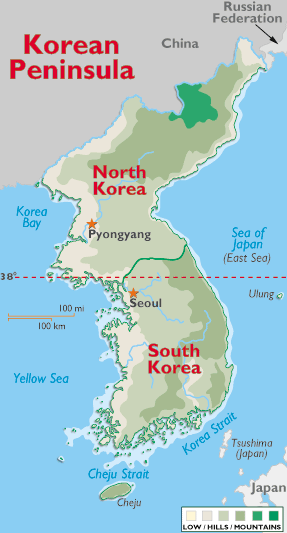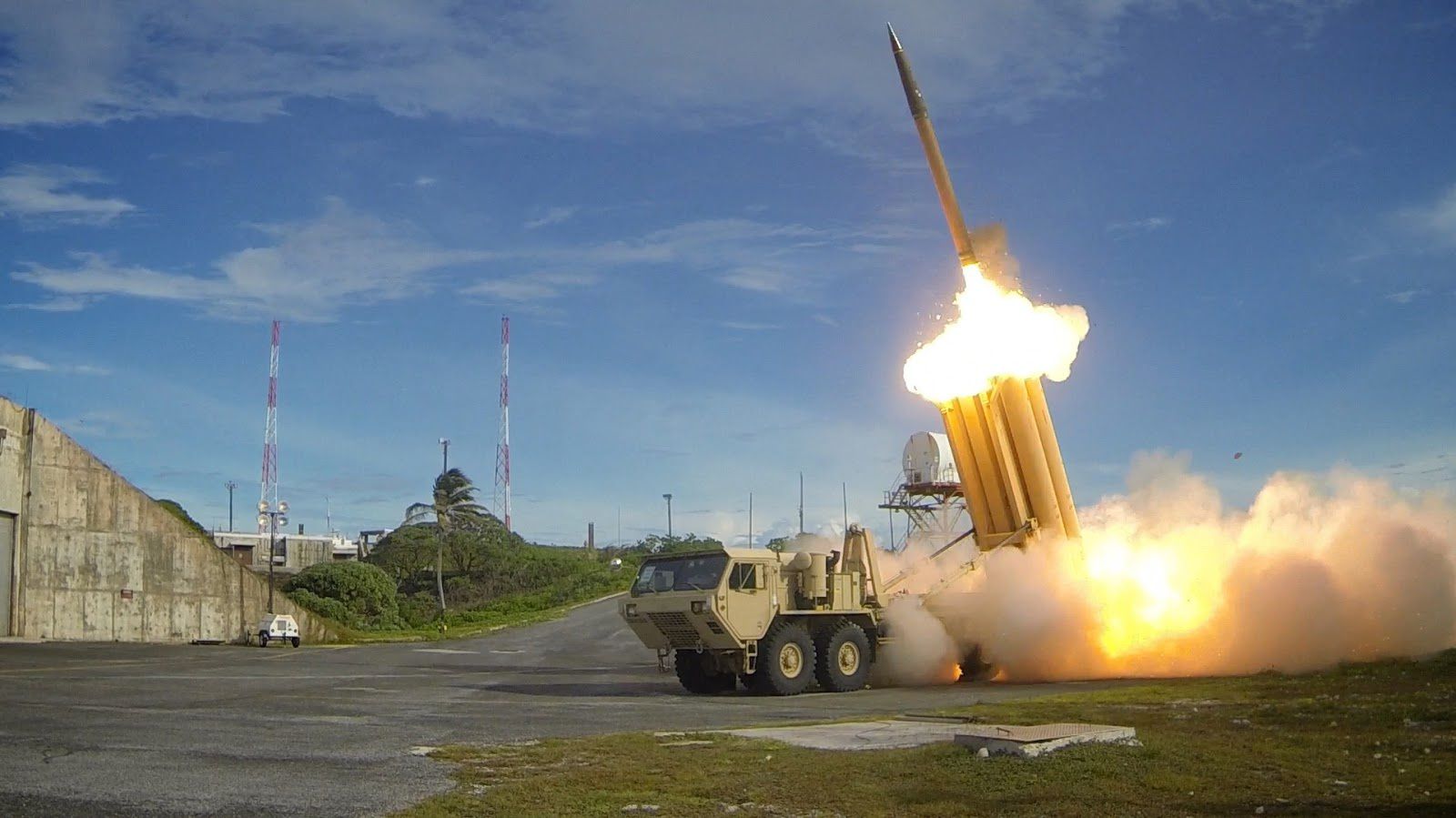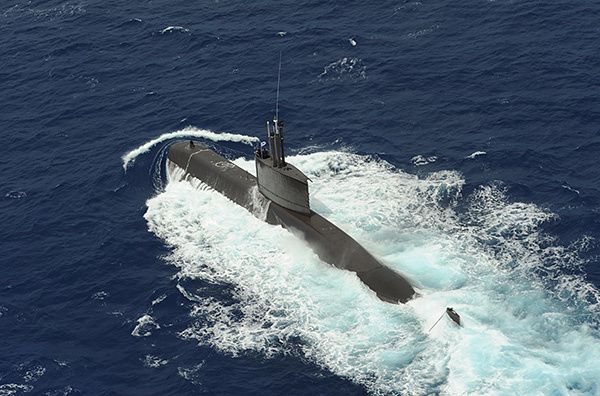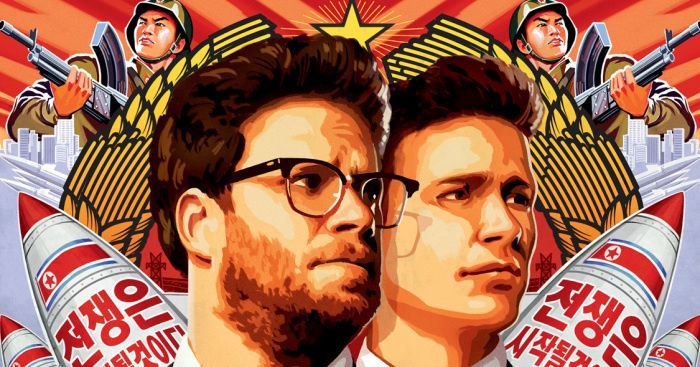March 19, 2015: Strategy Page
A South Korean investigation of a hacker attack on the computer network of the company that runs South Koreas’ nuclear power plant concluded that the attack came from North Korea. The hackers said they were protesting nuclear power and demanded South Korean nuclear plants be shut down. That was ignored and then the hackers released some stolen documents and demanded a ransom. That was apparently ignored as well. North Korea insists it had nothing to do with the attack but South Koreans have seen a growing number of such attacks that all point to North Korea as the source.
South Korea has openly called on China to stop using diplomatic threats and economic bribes in an effort to get South Korea to halt the installation of an anti-missile system. South Korea wants this American THAAD anti-ballistic missile defense system for protection from North Korean missile attack. The Chinese would not come right out and say it but they object mainly because THAAD would also make South Korea less vulnerable to intimidation by Chinese ballistic missiles. South Korea openly refused to comply with the Chinese threats and South Korean public opinion became even more enthusiastic about the high tech and very expensive (over $100 million per launcher and associated equipment) THAAD system. China sees South Korea more of an ally of the United States and a potential wartime foe than as an ally in attempts to keep North Korea from doing anything that would cause major economic and diplomatic problems (like starting a war).
North Korea is also unhappy with a new UN study which documents North Korea kidnapping over 200,000 people since the early 1950s. Most of these were South Korean taken during the Korean War (1950-53) but hundreds were taken, from the 1960s on, from eleven other countries. About half these victims were Japanese and Japan has been putting economic and diplomatic pressure on North Korea since the 1990s to try and get these people back as well as details of exactly who was taken. North Korea is willing to negotiate over this but these talks are stalled over how much North Korea wants in return for coming clean on these abductions. North Korea now wants Japanese help in getting the UN to back off on threats to charge North Korea with “crimes against humanity” because of the abductions. Negotiations continue, which is usually the best you can hope for when dealing with North Korea.
Although China has withheld some forms of aid to North Korea in an effort to halt the North Korean nuclear weapons program, economic aid has more than doubled, to nearly $7 billion a year. since 2009. That’s nearly 20 percent of North Korean GDP and is what is keeping the North Korean economy functioning. Despite that stranglehold on their survival, North Korea continues to resist Chinese “requests” that they get rid of their nuclear weapons program. China could arrange a coup against the ruling Kim dynasty but that risks plunging North Korea into chaos, rebellion or civil war (or all three), which would require a Chinese invasion and occupation to sort out. For the moment China prefers to be prudent and patient.
As serious a threat North Korea poses to the neighborhood, Americans are less concerned. Despite the declining ISIL (Islamic State in Iraq and the Levant) prospects a recent opinion poll in the United States showed that 84 percent of Americans believe ISIL is the most serious threat over the next decade. International terrorism also has 84 percent of Americans concerned. Iranian nukes frighten 77 percent followed by North Korea (64 percent) and Russia (49 percent, actually a tie with the Islamic effort to destroy Israel).
Despite continuing Chinese aid, North Korea knows that China could do more but isn’t because the Chinese are unhappy with North Koreas’ self-destructive economic policies and determination to build a large number of nuclear weapons. While South Korea, Japan and America see these nukes aimed at them China realizes that China is the traditional overlord of (and threat to) independent minded Koreans. So China sees these nukes as a threat to Chinese power in the region and that sort of insolence cannot be tolerated. While Westerners tend to ignore (or play down) this sort of thing it is taken for granted by Koreans and Chinese. With this in mind North Korea is forging stronger ties with Russia, which is also a historical foe of China that, at the moment, pretends to be a Chinese ally. Russia is in bad economic and diplomatic shape because of the falling price of oil and aggression against Western neighbors, but is still sending some economic aid to North Korea and pledging long-term friendship and cooperation.
Despite always giving China a hard time, North Korea encourages this “Chinese solution” by continuing to keep hard-liners from destroying the growing market economy. A growing number of people in the North Korean leadership understand (even if they don’t agree with) the superiority of a market economy over the communist command economy that has failed in every country it has been tried. For many North Koreans this failure shakes the faith in the system. But Chinese leaders point out that the communist bureaucrats in China have prospered along with the new entrepreneurial class. The key is in figuring out how to exploit the newly wealthy entrepreneurs without creating an angry opposition that can overthrow you. That’s what happened to most traditional monarchies in the 19th and 20th centuries and communism was supposed to be immune to that sort of thing but wasn’t. The last thing a thieving bureaucrat wants is democracy and many North Korean (and some Chinese) leaders fear that this is where it all leading.
In the short term all this new prosperity is causing the government problems closer to home, literally. Families of senior officials often contain wives or children who want more of the consumer goods and services they are seeing on illegal South Korean videos. In response many officials are not only taking bribes but seeking out opportunities to do so. Supreme leader Kim Jong Un knows, as do his Chinese counterparts, that this sort of thing eventually leads to a bloody (for the senior leadership) revolution. But stopping the corruption once it gets started is difficult and many historians of this sort of thing point that cleaning up this mess is, based on past experience, exceedingly difficult and rarely accomplished in dictatorships.
A growing problem in the south is the illegal debt (to North Korean people smuggling gangs) refugees from the north bring with them. The gangs up north will, for a fee of $10,000 to $20,000, get people out if North Korea, through China to a country (like Thailand) that tolerates the local South Korea embassy taking these refugees in and sending them to South Korea. The North Korean gangsters know how much money South Korea gives these refugees to adjust and how much refugees can earn in the more affluent south and adjusts their fees accordingly. In effect these refugees become employees of the gangs for years until their debt is paid off. If payments stop, the gang can kidnap or kill kin still in North Korea or China. The smuggling gangs work with the notorious “snakehead” gangs of China which have been going the same thing for Chinese for decades. The pressure on North Korea refugees is often so great that some commit suicide or turn to crime. The fees the North Korean snakeheads demand have skyrocketed in the past year as the North Korean government increased security on the Chinese border. This required more bribes to get people across as well as greater risk of running into secret police who cannot be bribed and are looking for snakeheads to prosecute and execute.
Despite the higher snakehead fees North Korean still pay it and get to South Korea. That is made possible by the growing market economy and prevalence of bribes which enables many more North Koreans to raise the cash to pay the snakeheads immediately on arrival. The snakeheads are fine with this. In South Korea these more affluent refugees often include government officials and military officers. These people had access to more information back home and are a prime source of data on overall conditions in the north. One of the more disturbing revelations is the growing hunger problem in the north and how that is impacting the military. Apparently North Korea has shifted more military resources to the nuclear and ballistic missile programs and part of that shift involved cutting food supplies to the troops. The way this works officers and their families still eat well but the most junior troops (recruits and those only in a year or so) are given just enough to stay alive. Soldiers who demonstrate their loyalty are given more food and this works to control the growing unrest in the ranks. What it does not control is the growing incidence of theft (especially of food or anything that can be sold or exchanged for food) by the constantly hunger young soldiers.
Canada revealed that one of their citizens (a clergyman who was born in South Korea) has been arrested in North Korea. The victim went to North Korea in January to do some humanitarian work. North Korea takes a dim view of this sort of thing and frequently arrests foreigners for that, especially if there are clergy. North Korea has not admitted to the arrest yet. Canada repeated its warnings to Canadians to stay out of North Korea.
March 15, 2015: In an effort to revive its tourism business North Korea has dropped the quarantine rules it introduced for tourists in late 2014. Quarantine caused a sharp drop in tourist traffic and spending. Back in November quarantine was seen as another new money making idea. This involved holding some visitors in isolation for 21 days to make sure they did not have Ebola. Thus in November North Korea began forcing most foreign visitors to remain in quarantine for 21 days after arrival. This was a scam to extract more money from visitors as they had to stay in designated hotels for the quarantine period and pay for it. Most business and all official visitors were not subject to the quarantine. No cases of Ebola have occurred in China or Korea. However China was considered vulnerable because there are over a million Chinese living in Africa, with over 100,000 living in areas where the Ebola deaths (over 5,000 by late 2014) have been highest. China had made preparations to deal with an Ebola outbreak in China and had experience in dealing with infectious diseases like this. The quarantine turned out to be an expensive mistake. This is especially the case sine, with much effort, North Korea had been able to increase the number of foreign tourists arriving each year to over 6,000. North Korea then went about creating more facilities (like a recently built ski resort) to accommodate them. While some tourists have been imprisoned, or even killed, North Korea is generally safer than most non-Western tourist destinations because there is virtually no crime. If you stay away from politics (the cause of most tourist problems) you are quite safe. Of course North Korea is very expensive as the government overcharges for everything and visitors are escorted everywhere. But for the very adventurous and affluent, North Korea is the place to be. North Korea needs the foreign exchange and have noted that many nations have turned tourism into major industries (often accounting for ten percent or more of GDP and accounting for most foreign exchange. The Ebola quarantine turned out to be a major mistake as tourist arrivals fell by over 90 percent. It took North Korean leaders several months to muster the courage to admit (without saying anything) that they were wrong and drop the quarantine. It is not clear if any senior officials were executed (as has long been the custom up there) for this expensive error in judgement.
March 12, 2015: North Korea test fired seven surface-to-air missiles off its east coast. This follows the firing of two SCUD ballistic missiles on the 2nd. These firing were supposed to be a form of protest against recent joint training exercises by American and South Korean forces. These training exercises are held regularly by the most capable military forces and the U.S. and South Korea have long done this. That bothers North Korea a lot because since the 1990s North Korea has been too poor to keep up in the training department. These days its nearly one million troops spend most of their time growing food and working for civilian enterprises to earn money to pay for fuel and other supplies the government can no longer afford to provide. North Korea announced these recent missile “tests” as they usually do without mentioning that they have a growing number of missiles that are reaching their expiration date (when too many aging components become unreliable) and conducting all these missile and rocket firing “tests” off the coasts is largely a case of “use it or lose it” combined with “let’s try and scare our enemies.” But this sort of thing has been going on for so long that it no longer has much shock appeal, but it is good training for the troops who operate these missiles and good for morale when these launches seem to go well. What is never revealed is if the guidance systems of these missiles were still functional. The guidance systems are components most vulnerable to aging and it is believed that many of these elderly missiles are launched with the guidance systems disabled so that a guidance system failure would not turn the missile firing into an obvious failure (as the missile careened about under the control of a failing guidance system).
March 11, 2015: South Korea announced a new law that allows it to assign police to guard foreign diplomats and other dignitaries the police believe might be subject to attack. This comes in the wake of the March 5th attack on the American ambassador by a deranged Korean nationalist who blames the United States for the division of Korea. A growing minority of South Koreans blame America for the division of Korea and some of these anti-America activists get violent from time to time. There have previously been attacks like this on American and South Korean officials but never one that involved a knife and left the victim bleeding. This attacker will be prosecuted and his attack appalled most South Koreans. North Korea praised the attacker (who openly praised North Korea and had visited there several times) but police have not been able to find any connection between this attack and North Korea. Then again North Korea has always encouraged South Korean conspiracy theorists who blame America, especially since many of these anti-American activists are pro-North Korea.
March 9, 2015: North Korea apologized to Bangladesh after a North Korean diplomat was caught trying to smuggle in 27 kg (59.4 pounds with $1.5 million) into Bangladesh. The senior diplomat had diplomatic immunity and apparently hoped that would protect his luggage from inspection. In this case it didn’t. North Korean diplomats are notorious crooks and since the 1990s have been caught smuggling or distributing drugs and counterfeit currency. More recently they have used their diplomatic immunity to smuggle illegal items (it is illegal to bring more than two kg of gold into Bangladesh without declaring it and paying a fee). In most countries where North Korea ganger diplomats are most active local police pay special attention to the North Koreans in general. Other nations react by severely limiting the number of North Korea diplomats admitted and given diplomatic immunity. In severe cases the North Korean embassy gets shut down and all North Koreans expelled. This keeps North Korea on good behavior, or at least urging its diplomats to try harder to not get caught. But the gangster diplomats are still a major source of foreign currency and useful contacts with powerful foreign gangsters so they remain at work.
North Korea needs all the economic help it can get because along with falling oil prices the prices for coal and iron ore (major North Korean exports) are also falling. This is hurting North Korea big time, far more than economic sanctions. The situation is not as dire as with oil (where the price has declined by more than half since 2014.) Coal and oil prices have fallen about 15 percent and the volume of exports (because of lower demand) have gone down about ten percent. This situation is getting worse as the Chinese economy (the main customer for the ore and coal) continues to slow. While mining is only about 14 percent of the North Korean economy it is the major source of foreign currency, which is needed to pay for imports.
March 2, 2015: Israel claims that Syria has transferred some long range (700 kilometers) SCUD ballistic missiles to Hezbollah. These missiles carry a half ton high-explosive warhead. These SCUDs are actually North Korean variants on the original Russian SCUD that have a smaller warhead to enable longer range.
February 28, 2015: North Korean dictator Kim Jong Un made a big deal of ordering his military to prepare for war. This was done as a form of protest against large scale military training exercises, which North Korea can no longer afford. Protests, however, are cheap.
February 25, 2015: The UN released a report showing that North Korea continues to operate state-owned merchant ships for use in smuggling operations. The UN reported discovering several cases where North Korean ships earlier caught smuggling were now back in business with new names. This is just the latest round in the international effort to shut down the North Korean smuggling fleet. This fleet grew considerably in the 1990s and the U.S. soon began paying attention. Thus by 2006 the U.S. ordered that American citizens were no longer allowed to own, lease, operate or insure any vessel flagged by North Korea. This made it more difficult for North Korea to maintain its fleet of smuggling ships. At the time it was believed that about ten of the 80 ships registered in North Korea were American.





























